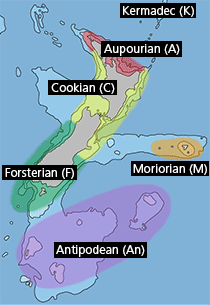Compare Ophiothrix lepidus
| toggle to add to compare list |
Taxonomy
Phylum: Echinodermata This is not a Mollusc. Other non-Molluscan Phyla (Echinodermata, Brachiopoda etc) have been included to help identify species that may be mistaken for Mollusca, but are not. Family: OPHIOTRICHIDAE Full Classification: Echinodermata (Phylum) > Asterozoa (Subphylum) > Ophiuroidea (Class) > Myophiuroidea (Subclass) > Metophiurida (Infraclass) > Ophintegrida (Superorder) > Amphilepidida (Order) > Ophiactoidea (Superfamily) > Ophiotrichidae (Family) > Ophiothrix (Genus) > Acanthophiothrix (Subgenus) > lepidus (Species) Genus Synonyms: =Ophionyx Müller & Troschel, 1840 |
Images: Ophiothrix lepidus de Loriol, 1893
No images yet of this species.
If you have good photos you would like to share, please email me, and I can add them here.
If you have good photos you would like to share, please email me, and I can add them here.
Taxonomy
Phylum: Echinodermata This is not a Mollusc. Other non-Molluscan Phyla (Echinodermata, Brachiopoda etc) have been included to help identify species that may be mistaken for Mollusca, but are not. Family: OPHIOTRICHIDAE Full Classification: Echinodermata (Phylum) > Asterozoa (Subphylum) > Ophiuroidea (Class) > Myophiuroidea (Subclass) > Metophiurida (Infraclass) > Ophintegrida (Superorder) > Amphilepidida (Order) > Ophiactoidea (Superfamily) > Ophiotrichidae (Family) > Ophiothrix (Genus) > Acanthophiothrix (Subgenus) > lepidus (Species) Genus Synonyms: =Ophionyx Müller & Troschel, 1840 |
Details: Ophiothrix lepidus de Loriol, 1893
Distribution:
Recorded mainly from the Southwest Pacific, Kermadec and Norfolk Islands, but has recently been found in the Far North of NZ
Geographical Range:
KA
Notes:
Species Links
Distribution Map
References and Publications
- Mills, S., Neill, K., Anderson, O., Davey, N. 2017 Extraordinary Echinoderms. A guide to the echinoderms of New Zealand. Version 2, Niwa Guides (p.48)
Key to Geographical Ranges

The symbols K.A.C.F.M.An. are used to indicate the geographical range of the species.
They have been adopted to give an approximation of the range of each species within New Zealand.
K=
Kermadec Islands
A=
Aupourian - Kaipara Harbour, north around North Cape, encompassing the Three Kings Islands and south to East Cape
C=
Cookian - Lower North Island and the northern part of the South Island
F=
Forsterian - Otago, Fiordland and Stewart Island
M=
Moriorian - Chatham Islands, Pitt Island
An=
Antipodean - Subantarctic Islands of New Zealand
Fw =
Freshwater
L =
Land
N =
North Island
S =
South Island
E =
Endemic
I =
Introduced
R =
Recent
Sf =
Subfossil
Fo =
Fossil
Recently Viewed
